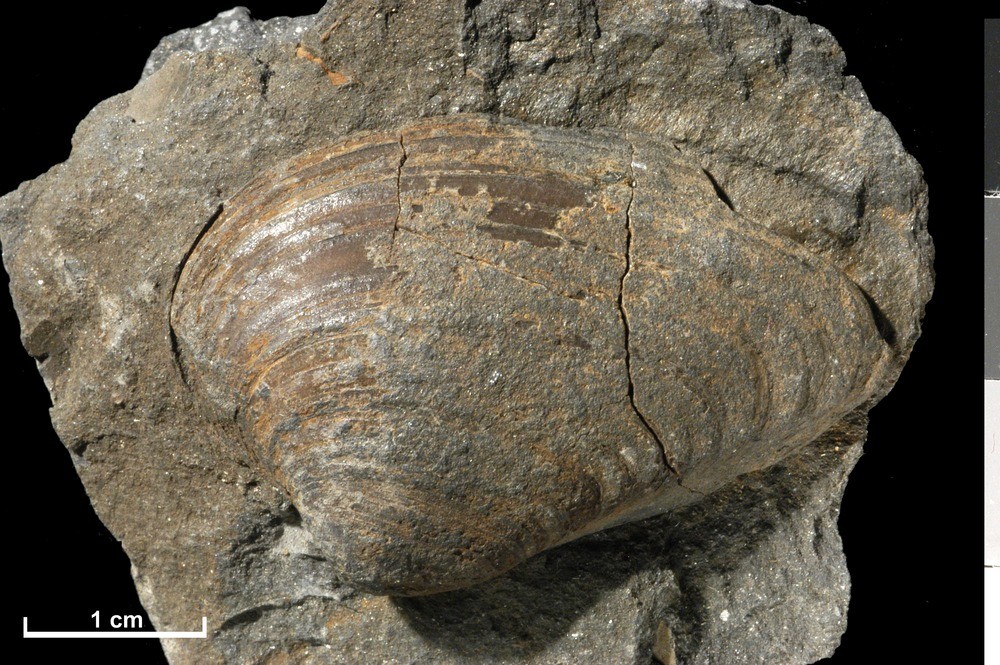| P number: | P521020 |
|---|---|
| Caption: | A fossil specimen of Cardinia listeri J. Sowerby. A fossil bivalve. (Mollusca, Bivalvia.) Allt Fearns, north of the road and 1.75 miles east of Inverarish, Raasay, Invernessshire, Scotland. |
| Description: | Cardinia is a burrowing (infaunal), suspension-feeding, medium-sized, elongated, thick-shelled bivalve. It is a member of the muddy sand community where increased turbulence in the shallower water caused an increase in the amount of organic material in suspension providing richer food supply. British Geological Survey Biostratigraphy Collection number GSE 2227. Bivalves have inhabited the earth for 500 million years, they flourished in the Mesozoic and are very common today. They are characterized by having two hard, usually bowl-shaped shells called valves which enclosed the soft parts. They were particularly vunerable to attack by gastropods, crustaceans, starfish and fish. Some protected themselves by developing thick shells and spines, others hid themselves by burrowing into the seabed. This specimen is from the Lower Lias raricostatum zone of the Lower Jurassic and was found at Allt Fearns, north of the road and 1.75 miles east of Inverarish, Raasay. |
| Date taken: | Wed Jan 01 00:00:00 GMT 2003 |
| Photographer: | Unknown |
| Copyright statement: | NERC |
| Orientation: | Landscape |
| Size: | 287.57 KB; 1000 x 665 pixels; 85 x 56 mm (print at 300 DPI); 265 x 176 mm (screen at 96 DPI); |
| Average Rating: | Not yet rated |
| Categories: | Unsorted Images |
Reviews
There is currently no feedback

